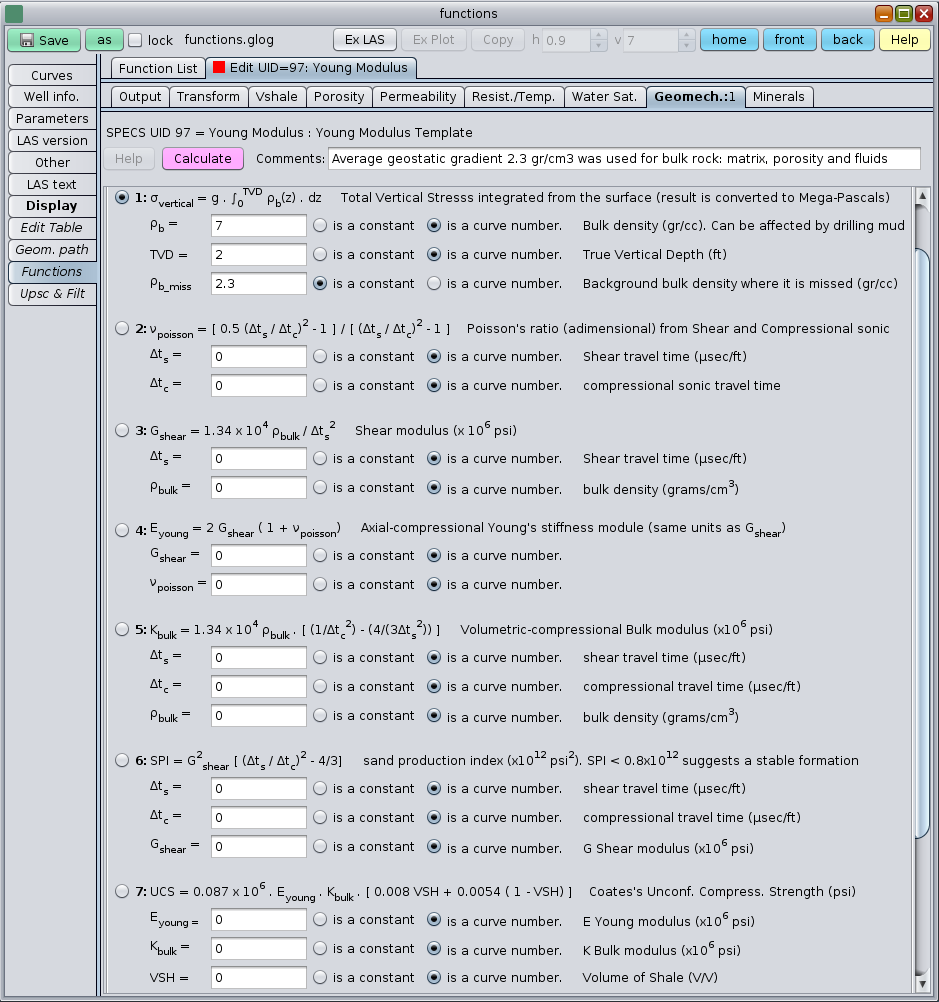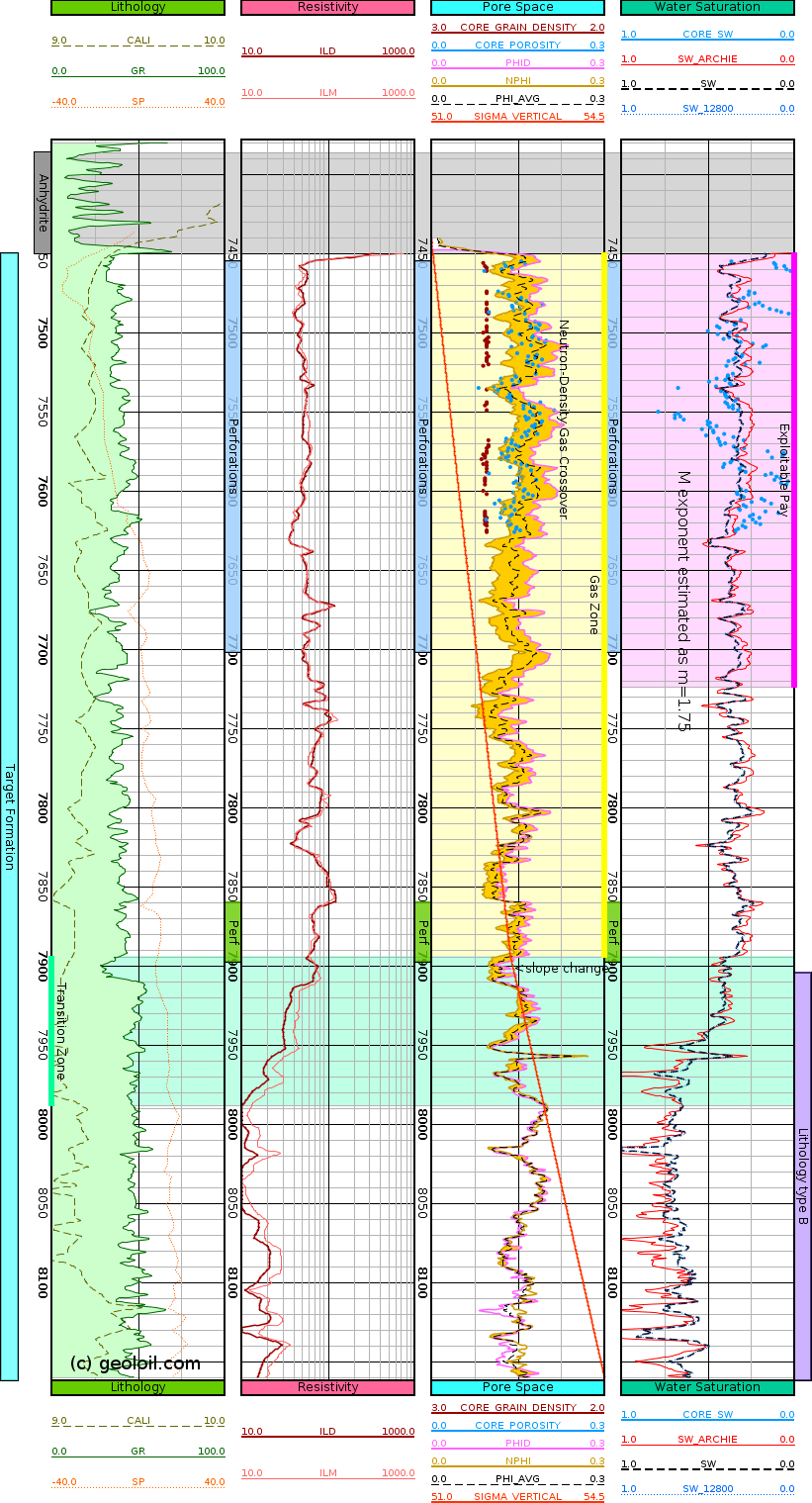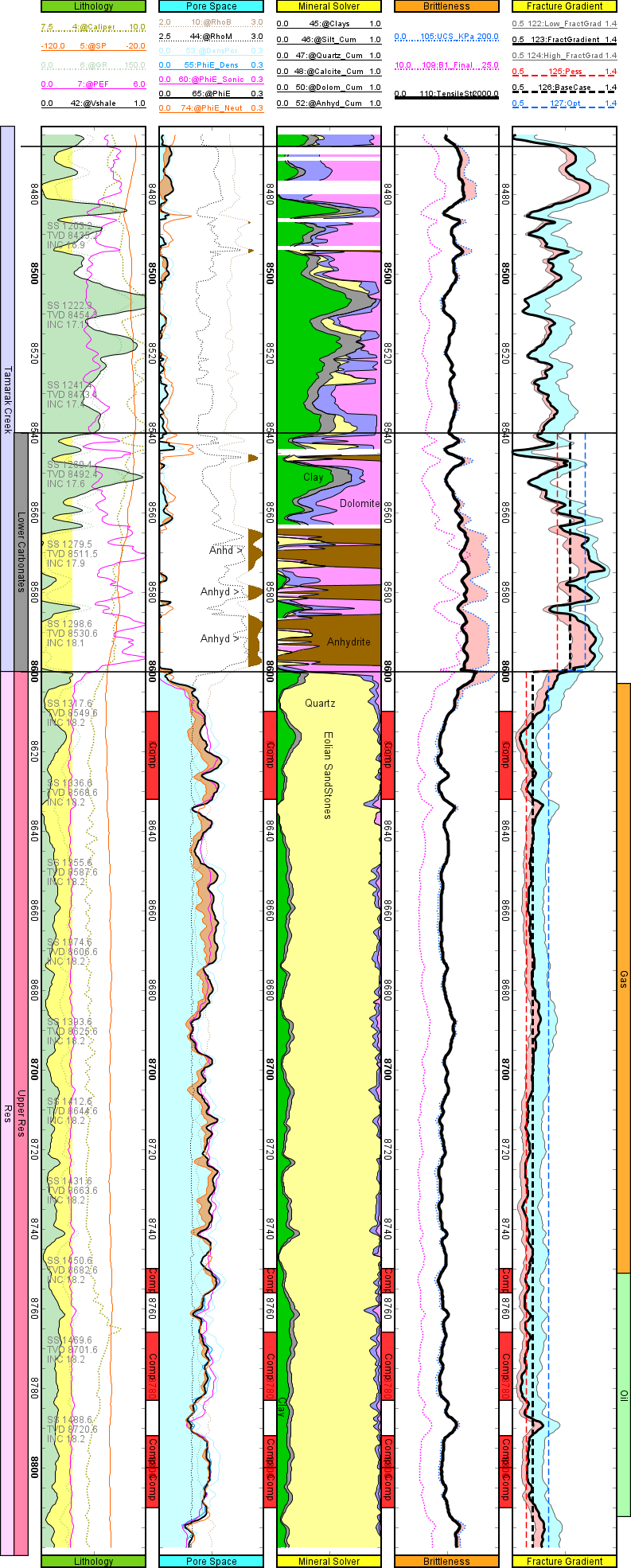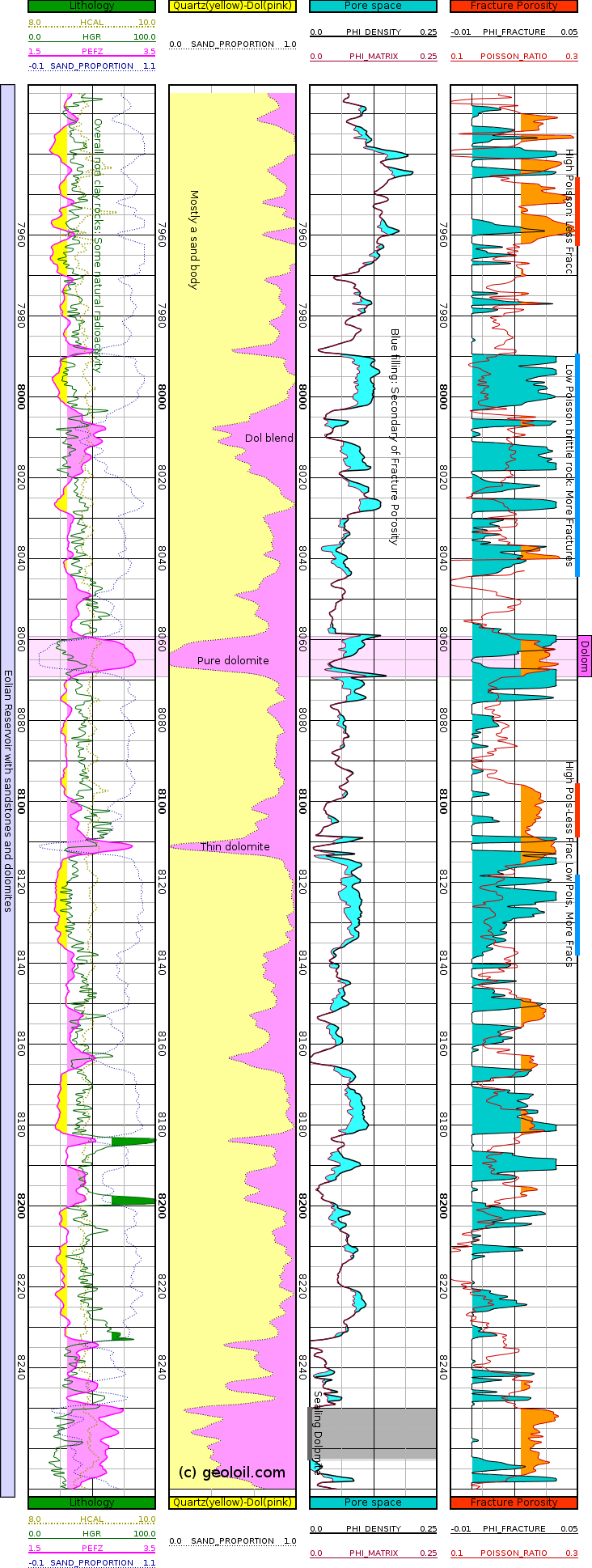
|
 Downloads
Downloads
|
 Prices
Prices
|
 Videos
Videos
|
GeolOil - How to compute geomechanical properties from well logs
Geomechanical properties calculated from well logs are called dynamical properties, and not always correlate well with statical properties measured on real lab physical core plug samples.
However, they yield whole zone continuous curves (instead of a collection of sampled points at core depths) and provide useful insights to study a reservoir without using destructive rock sampling tests (in the best case, the core may not be destroyed, but it is severely altered, thus not really representing the in-situ reservoir conditions). Some common equations to estimate gemechanical dynamical properties from well logs are:

GeolOil has several built-in function equations and correlations to compute geomechanical properties from well logs, among them:
- σv Total vertical stress through the integration of ρb bulk density log (a change in the slope may suggest gas presence)
- ν Poisson ratio from shear and compressional sonic logs
- G Shear modulus from shear travel time and bulk density logs
- E Young modulus from G and Poisson ratio ν
- K Bulk modulus from shear & compressional sonic logs, and bulk density log
- SPI Sand Production Index from G, and shear & compressional sonic logs
- UCS Unconfined Compressive Strength from E, K, and VSH empirical correlation
- UCS Unconfined Compressive Strength from empirical porosity correlation
- Biot's constant from empirical porosity correlation

A log geomechanics panel settings to calculate the overburden vertical stress
Since gas has a lighter density than oil or water, the computation of the total vertical stress by integrating the bulk density curve can be helpful to detect gas zones. A change on its gradient (a slight slope change in the log plot) suggests the presence of gas (in gas state).
In cases where there are curves for neutron porosity (after matrix lithology corrections) and calculated density porosity, the gas crossover usually corresponds with some minor change of slope or gradient on the total vertical stress log computed curve:

Computation of Total Vertical Stress and its change of slope (gradient) around a gas zone
The next log shows a geomechanical study that computes if a reservoir cap rock is strong enough to withstand the stresses of an injection process into a pay zone. The creation of fractures in the cap rock would produce leaks and environmental problems. More details on this study, and the full work-flow of the equations and functions used are shown in the learn-set.

A reservoir cap rock capability to resist the creation of fractures during an injection process
Another interesting geomechanical application is to compute the rock's Poisson ratio ν and compare it to its fracture porosity. As expected, the more brittle is a rock with a low Poisson's ratio ν, the more prone to detect fractures:

A log plot showing in the rightmost track, a relationship between Poisson's ratio ν and fracture porosity
 GeolOil is listed by the official
SPWLA software directory
GeolOil is listed by the official
SPWLA software directory
| |



|
|
|
© 2012-2025 GeolOil LLC. Please link or refer us under Creative Commons License CC-by-ND |




 TRAINING
TRAINING

 PAPERS
PAPERS
 REFERENCES
REFERENCES
 GET IN TOUCH
GET IN TOUCH


